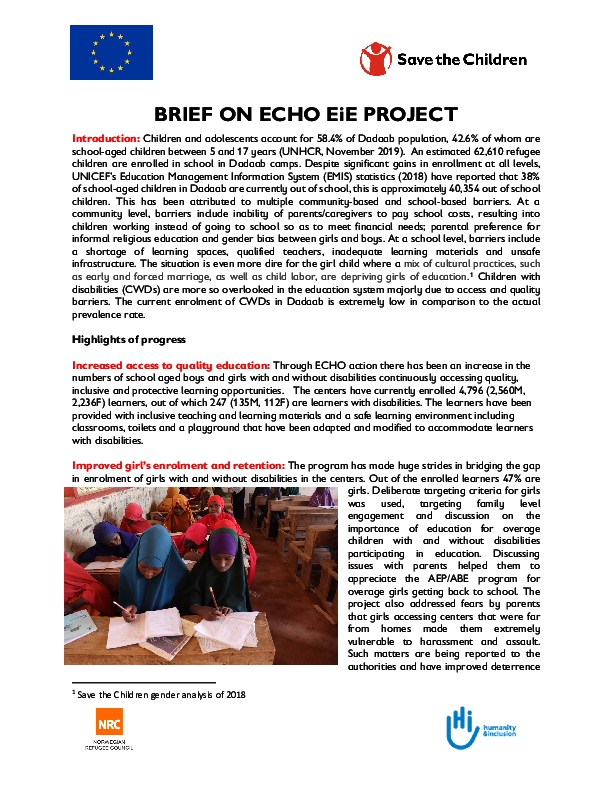
Briefs, Fact Sheets and Brochures
Brief on ECHO EiE Project
Publication year:
2020
English
Format:
pdf (469.9 KiB)
Publisher:
Save the Children International
Children and adolescents account for 58.4% of Dadaab population, 42.6% of whom are school-aged children between 5 and 17 years (UNHCR, November 2019). An estimated 62,610 refugee children are enrolled in school in Dadaab camps. Despite significant gains in enrollment at all levels, UNICEF’s Education Management Information System (EMIS) statistics (2018) have reported that 38% of school-aged children in Dadaab are currently out of school, this is approximately 40,354 out of school children. This has been attributed to multiple community-based and school-based barriers. At a community level, barriers include inability of parents/caregivers to pay school costs, resulting into children working instead of going to school so as to meet financial needs; parental preference for informal religious education and gender bias between girls and boys. At a school level, barriers include a shortage of learning spaces, qualified teachers, inadequate learning materials and unsafe infrastructure. The situation is even more dire for the girl child where a mix of cultural practices, such as early and forced marriage, as well as child labor, are depriving girls of education, Children with disabilities (CWDs) are more so overlooked in the education system majorly due to access and quality barriers. The current enrolment of CWDs in Dadaab is extremely low in comparison to the actual prevalence rate.
Read full abstract
View & Download
English
1 Documents
Document information
Publisher
Format
Content type
Country
Topics
Rights
© Author/Publisher
Keywords
Found a mistake? Help us improve!
If you have noticed a document assigned to the wrong author or any other inaccuracies, let us know! Your feedback helps us keep our data accurate and useful for everyone.
Share
Link
